PCB Design Pitfalls to Avoid for Successful Electronics Projects
Designing a printed circuit board (PCB) is a complex process that requires careful consideration and attention to detail. Even experienced designers can fall victim to common pitfalls that can lead to delays, increased costs, and suboptimal performance. In this article, we’ll explore ten of the most common problems in PCB design and provide tips on how to avoid them.
1. Inadequate Power and Ground Plane Design
One of the most critical aspects of PCB design is ensuring adequate power and ground plane design. Insufficient or poorly designed power and ground planes can lead to issues such as:
- Voltage drops
- Electromagnetic interference (EMI)
- Signal integrity problems
To avoid these issues, consider the following tips:
- Use appropriate Copper Weight for power and ground planes
- Maintain proper spacing between power and ground planes
- Use decoupling capacitors to reduce noise and stabilize voltage
2. Incorrect Component Placement
Proper component placement is crucial for optimal PCB Performance. Common mistakes include:
- Placing components too close together, leading to signal interference
- Placing heat-sensitive components near heat sources
- Placing components in a way that makes assembly difficult or impossible
To ensure correct component placement:
- Follow manufacturer recommendations for component spacing
- Consider thermal management when placing heat-generating components
- Use design for manufacturability (DFM) principles to ensure easy assembly
3. Inadequate Trace Width and Spacing
Trace width and spacing play a significant role in signal integrity and manufacturability. Common issues include:
- Traces that are too narrow, leading to high resistance and signal loss
- Traces that are too close together, causing crosstalk and signal interference
- Traces that are difficult or impossible to manufacture due to width or spacing constraints
To avoid these problems:
- Follow manufacturer recommendations for trace width and spacing
- Use impedance matching techniques for high-speed signals
- Perform design rule checks (DRC) to ensure manufacturability
4. Ineffective Thermal Management
Proper thermal management is essential for ensuring the long-term reliability and performance of a PCB. Common thermal management mistakes include:
- Insufficient heat sinking for high-power components
- Inadequate airflow for convective cooling
- Poor thermal interface material selection
To improve thermal management:
- Use thermal simulation software to identify hot spots and optimize heat sink placement
- Incorporate air vents and fans for active cooling
- Select thermal interface materials with appropriate thermal conductivity
5. Signal Integrity Issues
Signal integrity problems can cause data corruption, system crashes, and other performance issues. Common signal integrity pitfalls include:
- Reflections caused by impedance mismatches
- Crosstalk between adjacent traces
- Electromagnetic interference (EMI) from external sources
To maintain signal integrity:
- Use appropriate termination techniques for high-speed signals
- Implement proper shielding and grounding practices
- Perform signal integrity simulations to identify and mitigate potential issues
6. Incorrect Layer Stack-up
The layer stack-up of a PCB can significantly impact its performance, manufacturability, and cost. Common layer stack-up mistakes include:
- Using an insufficient number of layers for the design complexity
- Placing signal layers too close to power or ground layers
- Neglecting to consider the impact of dielectric material properties
To ensure an optimal layer stack-up:
- Work with your PCB manufacturer to determine the appropriate number of layers
- Follow best practices for layer arrangement, such as placing signal layers between power and ground layers
- Consider the dielectric constant and Loss Tangent of the PCB Substrate material
7. Neglecting Design for Manufacturing (DFM)
Designing a PCB without considering manufacturability can lead to increased costs, delays, and even project failure. Common DFM oversights include:
- Using component footprints that are not compatible with the manufacturing process
- Specifying excessively tight tolerances for hole sizes and spacing
- Neglecting to add Fiducial Markers for automated assembly
To incorporate DFM principles:
- Consult with your PCB manufacturer early in the design process
- Use standard component footprints and packages whenever possible
- Include fiducial markers and other features to facilitate automated assembly
8. Inadequate Documentation
Poor documentation can lead to confusion, errors, and delays during the manufacturing and assembly process. Common documentation pitfalls include:
- Incomplete or unclear assembly drawings
- Missing or incorrect bill of materials (BOM)
- Lack of version control for design files
To ensure adequate documentation:
- Create detailed and accurate assembly drawings
- Generate a complete and up-to-date BOM
- Implement version control for all design files
9. Ignoring Electrostatic Discharge (ESD) Protection
Electrostatic discharge (ESD) can damage sensitive electronic components, leading to reduced reliability and increased costs. Common ESD protection mistakes include:
- Failing to include ESD protection devices in the design
- Incorrectly placing ESD protection devices
- Using inadequate ESD protection measures during assembly and handling
To incorporate ESD protection:
- Include ESD protection devices, such as transient voltage suppressors (TVS) or ESD diodes, in the design
- Place ESD protection devices as close as possible to the input/output pins
- Implement ESD-safe handling procedures during assembly and testing
10. Not Performing Thorough Design Reviews
Skipping or rushing through design reviews can allow errors and oversights to slip through, leading to costly rework and delays. Common design review pitfalls include:
- Not involving all relevant stakeholders in the review process
- Failing to allocate sufficient time for thorough reviews
- Not documenting and addressing review findings
To ensure effective design reviews:
- Involve representatives from design, manufacturing, assembly, and testing in the review process
- Schedule design reviews at key milestones throughout the project
- Document and track review findings and action items
By avoiding these common pitfalls and following best practices for PCB design, you can ensure the success of your electronics projects, reducing costs, improving performance, and accelerating time to market.
Frequently Asked Questions (FAQ)
1. What is the importance of a good power and ground plane design in a PCB?
A well-designed power and ground plane is essential for maintaining signal integrity, reducing electromagnetic interference (EMI), and ensuring stable voltage delivery to components. Inadequate power and ground plane design can lead to issues such as voltage drops, noise, and signal degradation.
2. How can I ensure proper component placement on my PCB?
To ensure proper component placement, follow manufacturer recommendations for component spacing, consider thermal management when placing heat-generating components, and use design for manufacturability (DFM) principles to facilitate easy assembly. Use PCB design software to check for placement errors and optimize component locations.
3. What are the consequences of using incorrect trace width and spacing in a PCB design?
Using incorrect trace width and spacing can lead to issues such as high resistance, signal loss, crosstalk, and signal interference. It can also make the PCB difficult or impossible to manufacture. To avoid these problems, follow manufacturer recommendations for trace width and spacing, use impedance matching techniques for high-speed signals, and perform design rule checks (DRC) to ensure manufacturability.
4. How can I incorporate effective thermal management in my PCB design?
To incorporate effective thermal management, use thermal simulation software to identify hot spots and optimize heat sink placement, incorporate air vents and fans for active cooling, and select thermal interface materials with appropriate thermal conductivity. Consider the placement of heat-generating components and ensure adequate airflow for convective cooling.
5. What are some common signal integrity issues in PCB design, and how can I mitigate them?
Common signal integrity issues in PCB design include reflections caused by impedance mismatches, crosstalk between adjacent traces, and electromagnetic interference (EMI) from external sources. To mitigate these issues, use appropriate termination techniques for high-speed signals, implement proper shielding and grounding practices, and perform signal integrity simulations to identify and address potential problems.
By understanding and addressing these common PCB design pitfalls, electronics designers can create more reliable, high-performance, and cost-effective products. Investing time and effort in thorough design reviews, incorporating best practices, and collaborating with manufacturing partners can help ensure the success of any PCB-based electronics project.
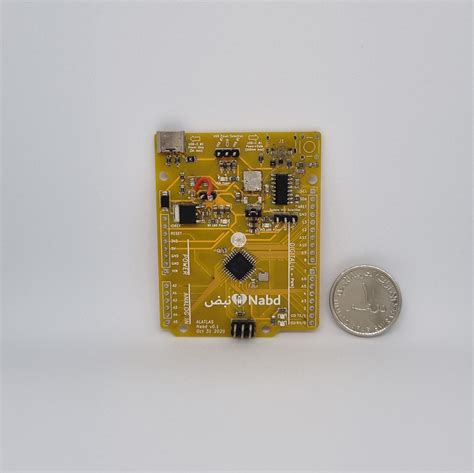
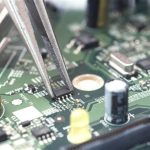
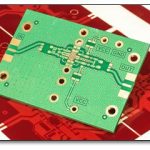
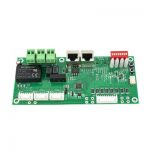
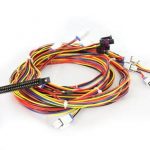
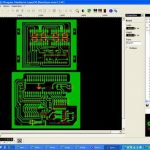
Leave a Reply